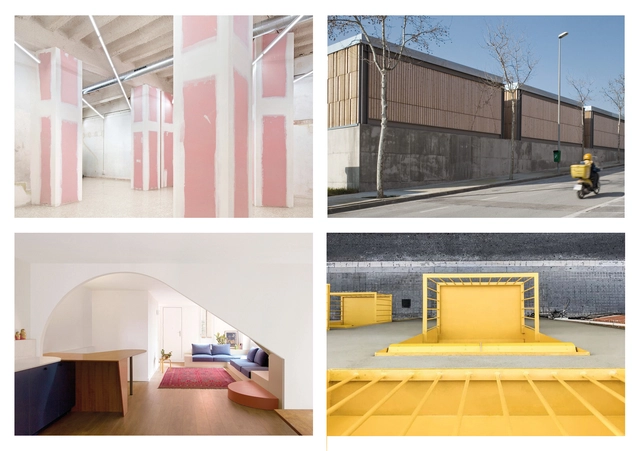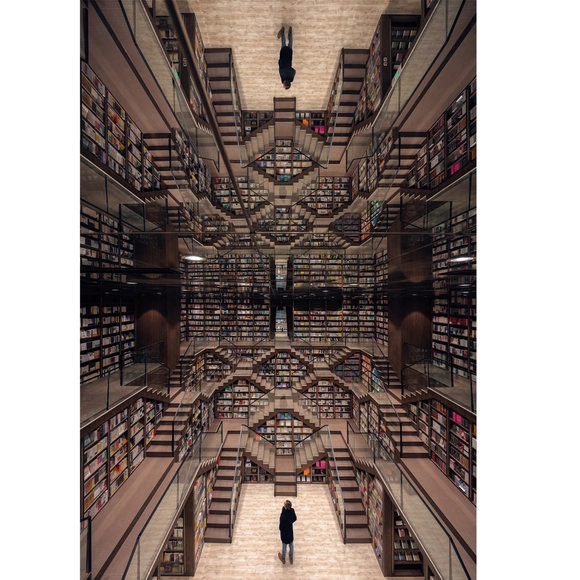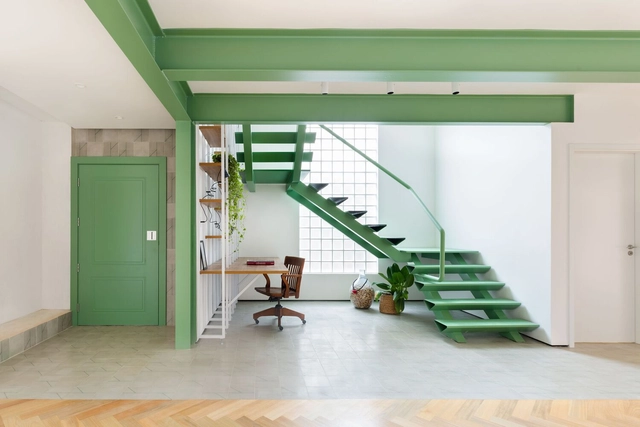In hospitality, first impressions count. Corian® Solid Surface – an exclusive product of Corian® Design, a division of DuPont company – has become a more and more regular guest in hotels over the past decades as designers and architects look to create highly hygienic and adaptable interior designs. designboom and ArchDaily concluded its three-part webinar series with the material producer, this time to explore the future of hospitality design. Leading architectural and design experts joined the live conversation, including TBI Architecture & Engineering, JOI-Design and Ultraspace – watch above.
Articles
Webinar: ArchDaily and designboom Talk Future of Hospitality Design with Corian® Design, TBI, JOI-Design & Ultraspace
A Tropical Resort in Indonesia and a Countryside Villa in Birmingham: 9 Unbuilt Interiors Submitted by the ArchDaily Community

Architects play an important role in creating healthy, functional and aesthetically pleasing environments. Interior design represents a natural continuation of the same prerogative, and its importance has been accentuated in recent years, from the lockdown forcing many people to remain indoors for extended periods of time, to the rise of remote work. The task of the interior designer is not decorating spaces, but planning for an effective use of space, understanding the needs of the user and highlighting the intrinsic qualities of a space. Acoustics, lighting, material properties and proportions all play a role in achieving a coherent and enjoyable interior space.
This week’s curated selection of Best Unbuilt Architecture highlights interior design projects submitted by the ArchDaily community. From a pastel-colored library in Turkey to a renovated symphony hall in San Diego, US, this selection of unbuilt projects showcases how architects design interior spaces by integrating textures, materials, light, and color in well-proportioned spaces. The article includes projects from Turkey, US, Switzerland, Indonesia, UK, and Denmark.
New York State of Wind: Future Looks Breezy for Offshore Empire

This article was originally published on Common Edge.
While approaching Wainscott Beach on Long Island’s South Fork in early December, one could see the most tangible aspect of offshore wind’s New York progress even before hearing the crash of waves: three pillars, each about as tall as the Statue of Liberty, jutting up from the ocean. They were the legs of the Jill, a liftboat from the Gulf of Mexico stationed about a third of a mile off the coast of Long Island’s South Fork.
Paying Tribute to the Influential Architects We Have Recently Lost

The profession of architecture is often marked by those individuals who employ their talent and resources to enable change and bring forth a vision for a better future. While some of them began their careers with bold gestures that captured the attention of the architectural world and changed paradigms, others worked in a more quiet manner, shifting the focus to the users of the space and asking themselves how they can best contribute to enriching the lives of those around them.
As the new year begins, we pause to look back to the architects who have passed away over the course of the last year but whose legacy and contribution to architecture outlive them. Among them, we remember Pritzker Prize laureate and pioneer of the High-Tech Richard Rogers, Post-Modern icon Ricardo Bofill, the thoughtful Gyo Obata, advocate and innovator Doreen Adengo, social housing pioneer Renée Gailhoustet and the many-sided Pritzker Prize laureate Arata Isozaki.
Architecture Not to Scale: Viewing the Familiar With an Unfamiliar Eye

Scale is a term that has dominated the architectural profession for as long as built structures have existed. In the literal sense, scale defines the measurable standards that we have come to know and accept —the widths of door frames, a car turn radius, and of course, a means of producing measurable drawings. In a more abstract and figurative representation, scale describes a feeling of individual experiences when comparing themselves or a familiar object to something unfamiliar.
Architecture as Collaboration Between Human and Non-Human Species

Nowadays, much is said about the importance of collaborative design processes that involve joint creation, affirming a context in which there is less and less room for individual work and much more for the logic of collective and co-creation. Therefore, the idea that the work is created exclusively by the architect is already understood as a distortion of the complex reality of designing a project, going beyond the technical staff and also adding the community and its users.
Public and Cultural Buildings: A Tour of Copenhagen’s Architectural Masterpieces

True beauty in architecture lies in its ability to serve and improve human experience, yet this fundamental principle is not always upheld. Too often, we see “public” buildings that do not integrate into the urban fabric, are disconnected from their surroundings and fail to contribute to a city’s vibrancy and quality of life. Some may be quite beautiful to look at, but if they are not functional, comfortable, and welcoming to the people they are meant to benefit, their value as public spaces becomes rather questionable. Architectural icons like the Sydney Opera House and Bilbao Guggenheim Museum, for example, are celebrated not just for their stunning silhouettes or breathtaking interiors, but because they enhance culture and city life, enrich the community, and offer diverse opportunities for interaction and public involvement. It is this holistic, human-centered approach to design that allows these landmarks to become integral parts of a city’s identity, one that is embraced and owned by its citizens.
5 Women Leading Renowned Architectural Firms in Catalonia

We are going through times of great change and we are all aware of that. The role of women in the field of architecture is becoming more and more relevant and, unlike other times, such as in the 20th century, the female figure is no longer hidden behind the male figure, as happened to Anne Tyng with Louis Kahn or Lilly Reich with Mies van der Rohe, just to mention a few examples.
6 Architect Business Development Strategies to Grow Your Firm

Architect business development can be very challenging. It's not a topic that comes up in design school, and many of the practices that firms employ today can simply be categorized under the heading, “That's the way we've always done things.” At Archmark, we've helped more than 2,000 architects, in speaking with many firm owners, we've come to understand the struggles of running a successful architecture and design firm.
For example, you may be struggling with one or more of the following issues: Taking on “bad fit” projects because you have to pay the bills, Struggling to find new clients because you don't have a marketing system, Feeling pressure to reduce your fees because clients don't understand or value what you do, Getting pigeon-holed into the same type or level of projects due to a limited referral network, Anxiety about your future due to relying on a small number of large project sources.
If you’re looking to grow your architecture firm and take it to the next level, it may be time to consider some new ideas to mix into your business development process. So, what do you do? Where do you start?
Which Country Stands Out in Design? A' Design Awards Announce 2022 World Design Rankings

From 114 participating countries, the World Design Rankings (WDR) have once again ranked the best in arts, architecture and design, sponsored by the A' Design Award and Competition. With the objective of contributing to global design culture through advocating and highlighting good design, the rankings provide additional data and insights to economists and journalists regarding the design industry.
Zoning Laws and Their Impact on Urban Planning in the United States

Land use and zoning laws have been a trending topic in recent years, gaining significant public attention across the United States. People are beginning to rethink the ways that our cities have been planned, seeking ways to improve their quality of life- and it often stems from codes and policies that dictate what can be built and where. Zoning that is too restrictive often makes it difficult for developers to build necessary projects such as multi-family housing. But when zoning is too loose, it creates neighborhoods that aren’t walkable and don’t have a strong sense of community.
“I Want to Get Down to the Roots of Things”: Interview with Kim Utzon

Kim Utzon started his small architectural practice, Kim Utzon Arkitekter, in Copenhagen in 1987, choosing to work primarily in Denmark and neighboring Sweden, to keep close ties with family and be able to reflect effectively on regional building traditions. Kim is the youngest son of Jørn Utzon (1918-2008), the Pritzker Prize-winning architect whose most celebrated buildings include the Sydney Opera House (1973), Bagsværd Church near Copenhagen (1976), and the Kuwait National Assembly Building (1982). Kim’s brother Jan Utzon is a practicing architect and his sister Lin Utzon is a ceramic artist.
Valuing Memory While Adapting to Contemporary Needs: Sede Insole Energia by Mobio Arquitetura

There are many challenges when working with renovations: adapting spaces that were not necessarily designed for a particular program, adding new uses for rooms and modernizing the building in order to make it compatible with contemporary demands. This was the case of Mobio Arquitetura's project for the headquarters of a solar energy fintech company, which sought to value the memory of the historic building while adding a new layer of contemporary and technological infrastructure designed for the comfort, usability and productive coexistence of the new occupants. The office has been selected among the five winners of the 2022 Shaw Contract Design Awards "Best of Globe".
AZULIK and Roth Architecture Announce Their First residential Project in Tulum: "Habitable Sculptures"

The world-renowned brand, AZULIK announces the new project in Tulum, Quintana Roo which confirms its creative expansion and the growth of architectural scope: "Habitable Sculptures" its first residential complex that they describe as "a new proposal for lifestyle and sustainable luxury." The residential initiative was born from the firm Roth Architecture, continuing with the characteristic aesthetic that "puts nature as the protagonist and the user as a priority."
The Residential, Monumental, Gregarious and Bucolic Scales of Lucio Costa's Brasilia

"What characterizes and gives meaning to Brasilia is a game of three scales... the residential or everyday scale... the so-called monumental scale, in which man acquires a collective dimension; the urbanistic expression of a new concept of nobility... Finally the gregarious scale, in which dimensions and space are deliberately reduced and concentrated in order to create a climate conducive to grouping... We can also add another fourth scale, the bucolic scale of open areas intended for lakeside retreats or weekends in the countryside." - Lucio Costa in an interview with Jornal do Brasil, November 8, 1961.
Photographer Joana França shared with us an impressive series of aerial photographs of the national capital of Brazil, Brasilia. The photoset is divided into four sub-series each presenting a scale: residential, monumental, gregarious and bucolic.
Playgrounds: Conquering Public Spaces

Playgrounds are spaces with equipment dedicated to children's leisure, where they can develop motor and social skills. However, these spaces are new to our cultures and cities and emerge from the recognition of childhood as a fundamental stage of human development.
Workspaces, Benches and Gardens: Interventions to Make the Most of Windows

Usually, a window is an exterior opening that provides lighting and ventilation to the interior of a building. This connection with the context, added to appropriate lighting, makes it fundamental in the house. It is possible to improve your design so that it has different uses. Therefore, we have compiled some tips on how to take advantage of the sill to assign new functions to a room.
The Circular Potential of Fiber Cement Cladding

Sustainable cities demand sustainable solutions, which imply the development of a new mindset for the reformulation of conventional creation processes. Within the fight against climate change, the circular economy concept is known as a key factor for the sustainable solutions of the future. Part of this concept is known as circular design, which aims to transform the traditional paradigm of ‘using and throwing away’ into a commitment to reusing existing materials.
Circular design rethinks the creation process of products from the first steps, guiding architects and designers to create products that can be reused, recycled or transformed. Applying circularity in architecture opens the debate of rethinking the life cycle of construction materials. In this manner, fiber cement cladding –a combination of basic earth elements, mineral materials, water, air and fire, in a simple filtration process– proposes a design solution that meets the basic principles of circular construction. In addition to its composition, strength and durability, these products are designed as a system that can outlast a building's lifecycle.











































